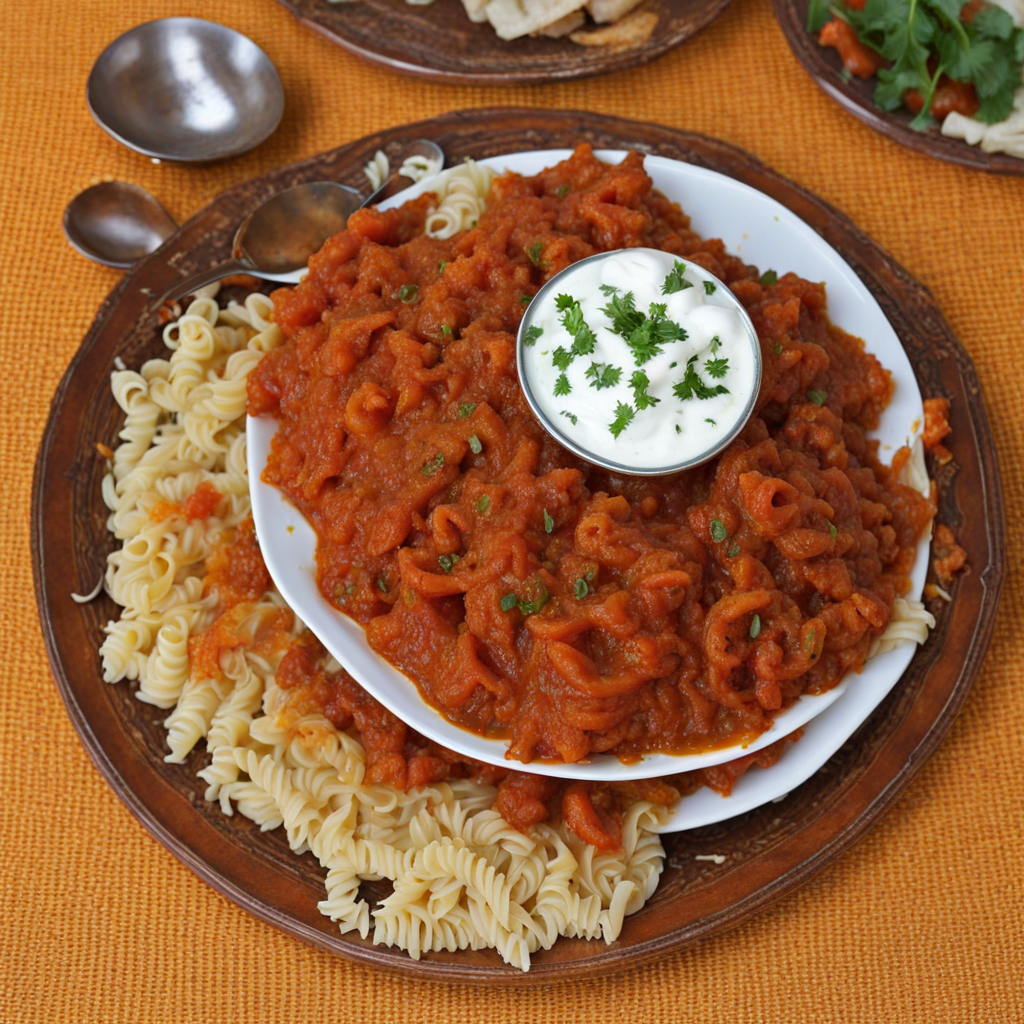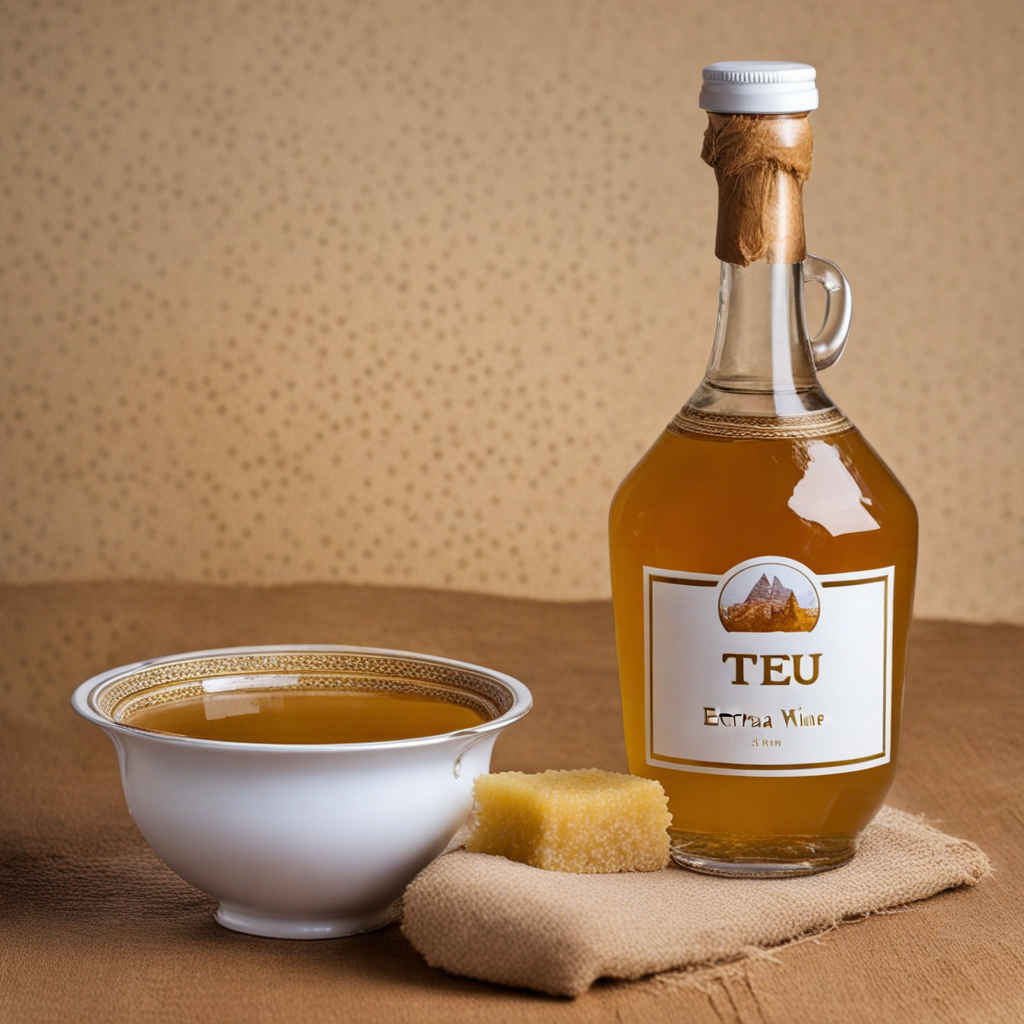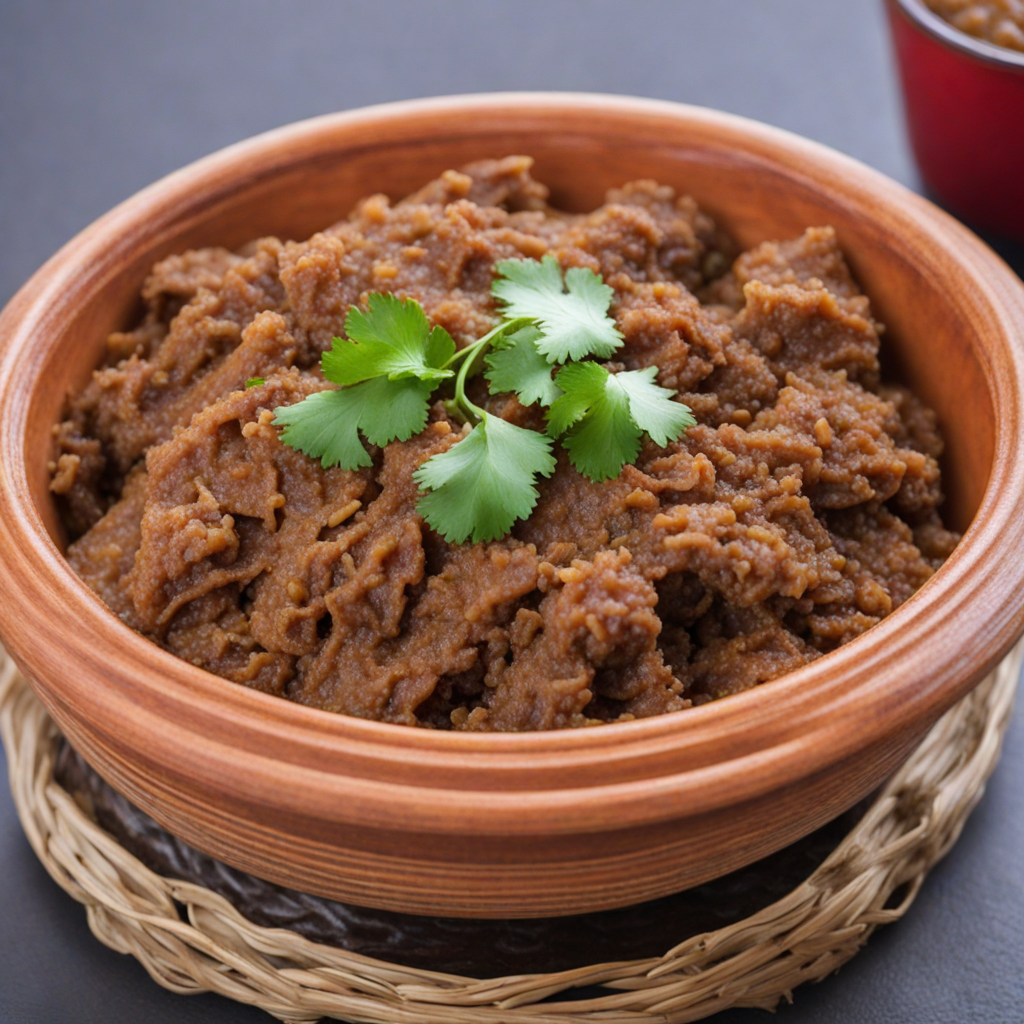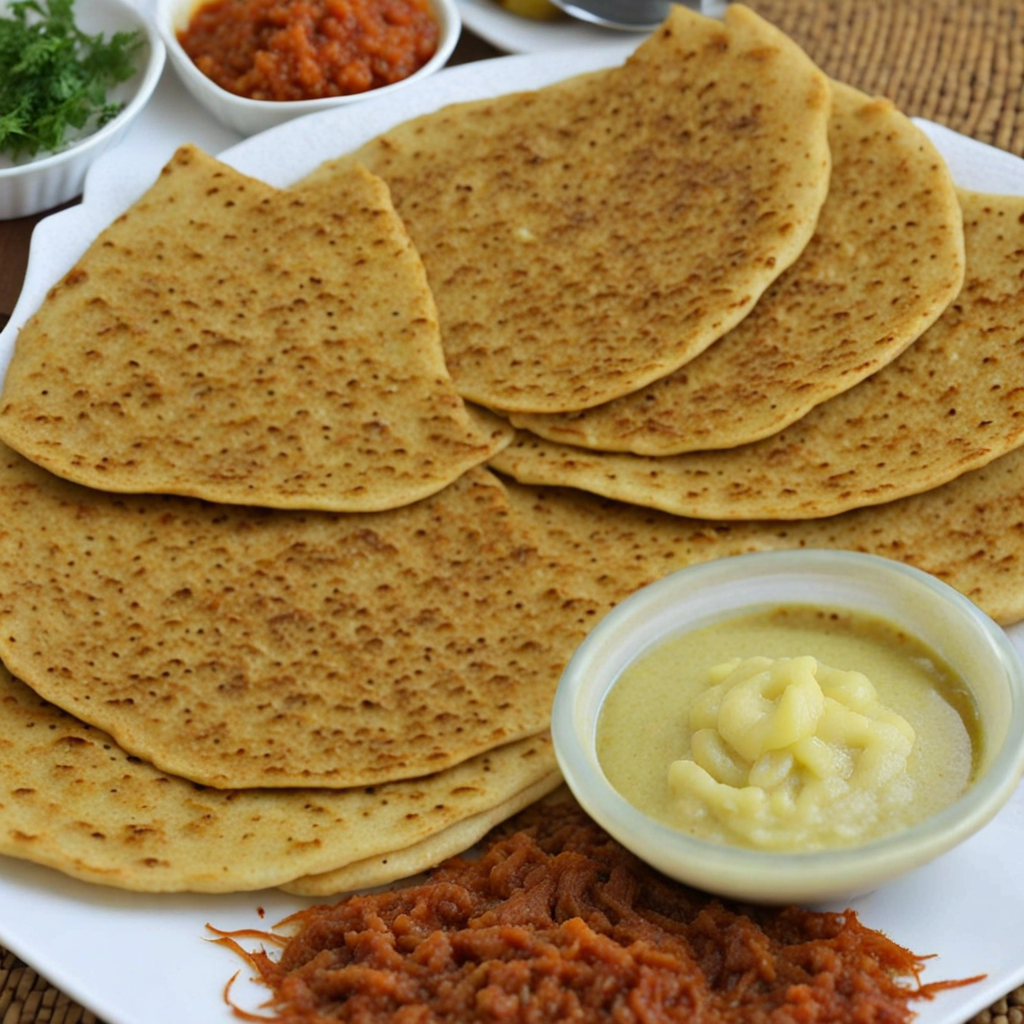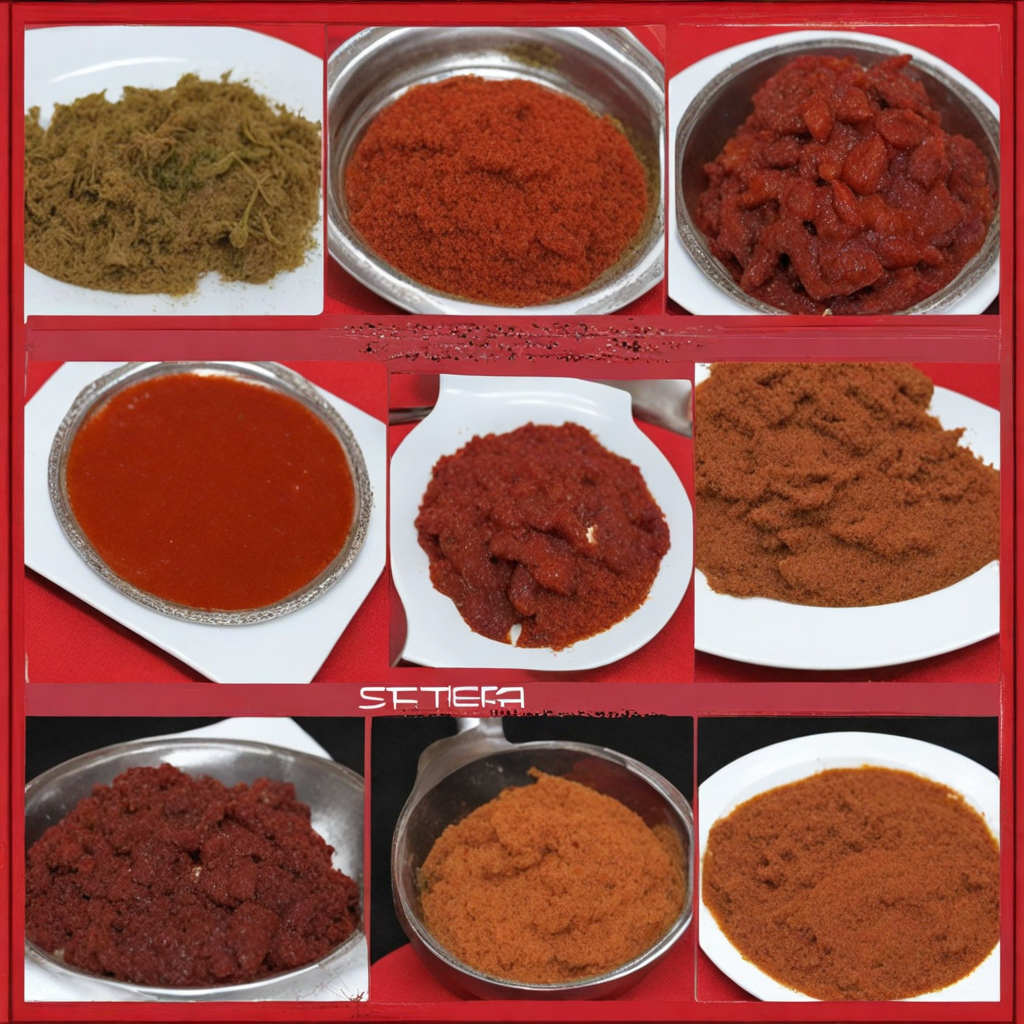Kursi
Kursi is a traditional Eritrean dish that beautifully embodies the rich and diverse culinary heritage of the region. At its core, Kursi consists of tender meat, typically lamb or beef, that is marinated with a blend of aromatic spices, including cumin, coriander, and the distinctive berbere spice mix. This spice blend, a staple in Eritrean cuisine, adds a depth of flavor that is both warming and invigorating. The meat is slow-cooked to perfection, allowing the spices to penetrate deeply, resulting in a dish that is both savory and fragrant, often served with a side of injera, the traditional fermented flatbread that complements the meal perfectly. Kursi is often accompanied by an assortment of vibrant vegetables, which may include carrots, potatoes, and bell peppers, all cooked to a tender consistency. These vegetables not only add a splash of color to the plate but also bring a natural sweetness that balances the spiciness of the meat. The dish is usually served communal style, encouraging a shared dining experience, where everyone digs in with their hands, tearing pieces of injera to scoop up the flavorful meat and vegetables. This communal aspect of the meal fosters a sense of togetherness, making it a cherished dish for family gatherings and celebrations. The experience of savoring Kursi is not just about the flavors; it’s also about the cultural significance behind the dish. Eritrean cuisine often reflects the country's rich history and the blending of various influences from the Horn of Africa and the Middle East. Each bite of Kursi transports you to the heart of Eritrean culture, where food is a cornerstone of community life. The combination of spices, textures, and the communal way of eating makes Kursi a delightful discovery for anyone looking to explore new tastes and culinary traditions.
How It Became This Dish
The History of ኩርሲ (Kursi) from Eritrea #### Origins The dish known as ኩርሲ (Kursi) is an emblematic part of Eritrean culinary culture, reflecting the rich tapestry of influences that have shaped the nation's food heritage. The origins of Kursi can be traced back to the rural communities of Eritrea, where it served as a staple food, particularly among the Bilen and Tigrinya people. The name "Kursi" itself derives from the Tigrinya language, which is one of the primary languages spoken in Eritrea. Kursi is primarily made from finely milled flour, traditionally wheat or barley, which is mixed with water and then shaped into small, round cakes or dumplings. These dumplings are then often cooked by steaming or boiling and served with a variety of sauces or stews, usually featuring meat, legumes, or vegetables. The basic preparation of Kursi reflects the agrarian lifestyle of Eritrean communities, where grains were harvested and processed into staple foods. #### Cultural Significance In Eritrean culture, food is more than just sustenance; it is a vehicle for social bonding and cultural expression. Kursi is often associated with communal gatherings, celebrations, and rituals. It plays a prominent role during holidays, weddings, and other significant events, where families and friends come together to share meals and stories. The preparation and sharing of Kursi can be seen as a form of hospitality, reinforcing social ties and cultural identity. Moreover, the dish is emblematic of Eritrea's diverse ethnic makeup. Eritrea is home to several ethnic groups, each with its own culinary traditions. Kursi has adapted to incorporate local ingredients and flavors, leading to numerous regional variations. For example, in some areas, spicy sauces made with berbere (a traditional spice blend) or fresh herbs are used to enhance the flavor of the dumplings. This adaptability signifies the dish's cultural relevance and its ability to bridge different communities within Eritrea. #### Development Over Time The evolution of Kursi can be viewed through the lens of Eritrea's historical and socio-political landscape. Throughout the centuries, Eritrea has been influenced by various civilizations, including the ancient Kingdom of Aksum, Ottoman Empire, and Italian colonization. Each of these periods left an indelible mark on Eritrean cuisine, including the preparation of Kursi. During the Aksumite period, which flourished from approximately 100 AD to 940 AD, the region became a center of trade and cultural exchange. Grains were a primary agricultural product, and the techniques for milling and preparing flour evolved significantly. The introduction of new spices and cooking methods during this time influenced the flavor profiles of traditional dishes like Kursi. The Ottoman Empire's influence in the 16th century brought new culinary ingredients and practices to the region. The use of spices, such as cumin and coriander, began to find their way into Eritrean kitchens, enhancing the flavor of dishes like Kursi. This period also saw the introduction of new cooking methods, including braising and stewing, which have since been integrated into the preparation of traditional meals. The Italian occupation from 1890 to 1941 further transformed Eritrean cuisine. Italians introduced pasta and other European ingredients, leading to the fusion of traditional Eritrean flavors with Italian culinary techniques. While Kursi remained a staple, its preparation began to incorporate elements of Italian cooking, such as the use of tomato-based sauces. Despite these influences, Kursi has retained its core identity as a simple, nutritious food. The post-independence period in the 1990s saw a resurgence of interest in traditional Eritrean foods, including Kursi. As the nation sought to reclaim its cultural heritage after decades of conflict, there was a renewed appreciation for traditional dishes. This revival was not only about preserving culinary practices but also about fostering a sense of national identity and pride. #### Modern Interpretations In contemporary Eritrean society, Kursi has remained a beloved dish, continuing to evolve while staying true to its roots. It is often served in restaurants that specialize in traditional Eritrean cuisine, attracting both locals and tourists eager to experience authentic flavors. The dish is typically accompanied by a variety of sides, such as spicy lentil stew (misir wot) or sautéed greens (gomen), making it a versatile option for any meal. Moreover, the globalization of food culture has led to the introduction of Kursi in diaspora communities around the world. Eritrean immigrants have brought their culinary traditions with them, establishing restaurants and food stalls that offer Kursi and other Eritrean dishes. This has contributed to the growing recognition of Eritrean cuisine on the global stage, allowing people of various backgrounds to appreciate the flavors and stories behind this traditional dish. In the home kitchen, Eritrean families continue to prepare Kursi, often passing down recipes and cooking techniques from generation to generation. The communal aspect of preparing and sharing this dish remains strong, with families gathering to make large batches during holidays or special occasions. It serves as a reminder of their heritage and an opportunity to connect with loved ones. #### Conclusion Kursi is more than just a dish; it is a symbol of Eritrean identity, resilience, and cultural heritage. Its history reflects the complex interplay of various influences that have shaped Eritrea's culinary landscape over the centuries. As it continues to evolve in modern times, Kursi remains a cherished staple, bridging the past and present while fostering a sense of community among Eritreans at home and abroad. The story of Kursi is a testament to the enduring power of food to connect people, honor traditions, and celebrate cultural diversity. As Eritrea moves forward, Kursi will undoubtedly remain a cornerstone of its vibrant culinary identity.
You may like
Discover local flavors from Eritrea


